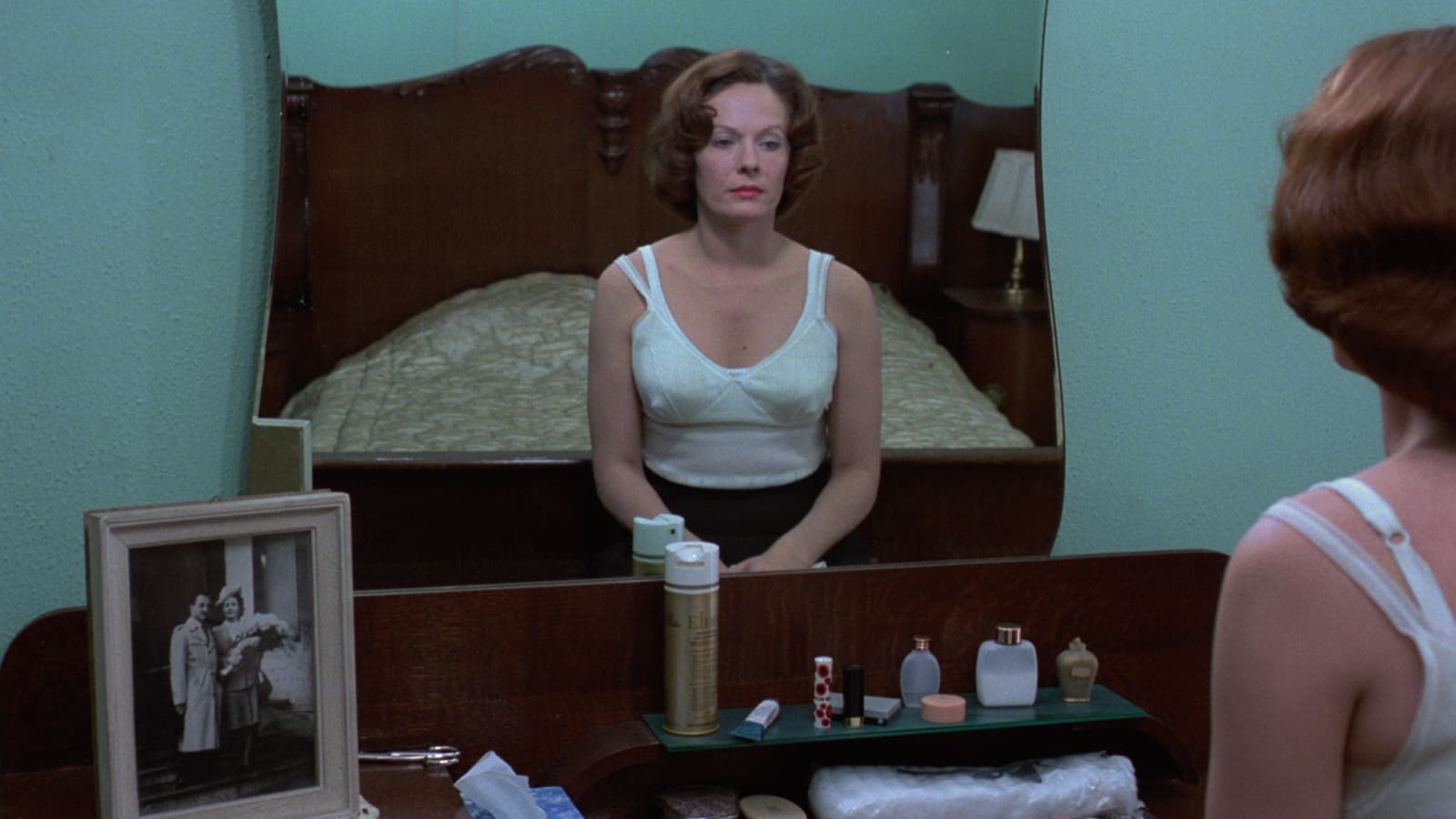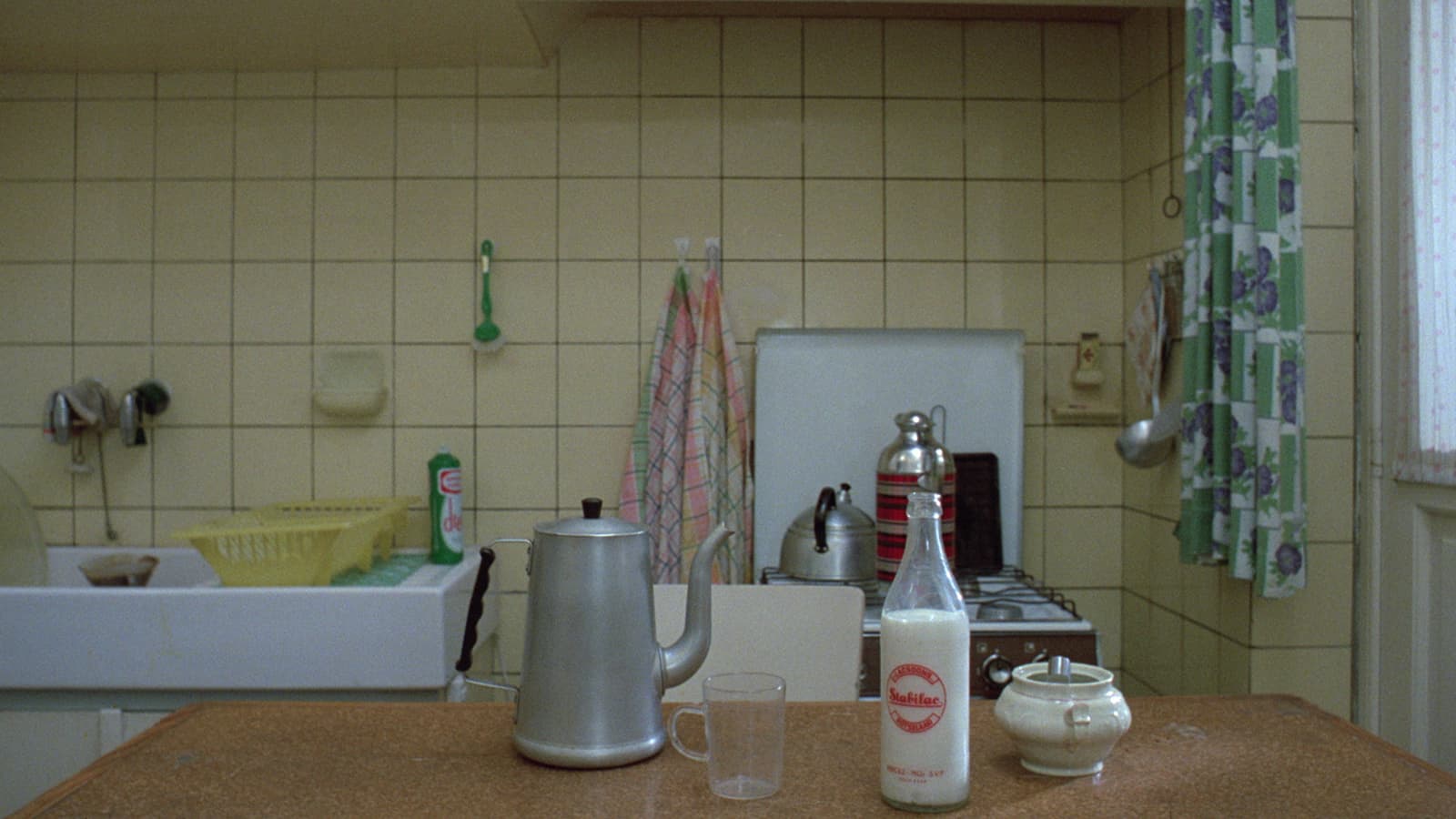Advertisement
The greatest film of all time is coming to Coolidge Corner Theatre. You might not like it very much

Chantal Akerman’s 1975 masterpiece “Jeanne Dielman, 23, quai du Commerce, 1080 Bruxelles” sent shockwaves through cinephile culture this past December by unexpectedly topping the British Film Institute’s 2022 Sight and Sound 100 Greatest Films of All Time List. Since 1952, the venerable institution has been polling critics, curators and academics once per decade to create a definitive roster of essential cinema. In 2002, Roger Ebert called it “by far the most respected of the countless polls of great movies — the only one most serious movie people take seriously.”
The survey’s inaugural edition was won by Vittorio De Sica’s “Bicycle Thieves,” a victory some still attribute to unranked lists putting it first in alphabetical order. But for the next 50 years, the roost was easily ruled by “Citizen Kane,” Orson Welles’ awe-inspiring portrait of wealth and power poisoning the American soul. Back then, ballots were distributed to about 100 or so critics, with only 63 voting the first time around. Then in 2012 came a massive expansion of the voting body, bringing in more than 800 contributors and with them an upset. “Kane” was dethroned to make way for Alfred Hitchcock’s feverish, perversely personal “Vertigo,” a famous flop with both critics and audiences upon its initial release in 1958. It just took a little time for folks to catch up with it.

The world is still catching up with “Jeanne Dielman,” which vaulted from 35th place in 2012 to the top spot last year. The movie is a mind-melting, 201-minute colossus of monotony, following three days in the life of a lonely widow (Delphine Seyrig) while she performs a precise daily regimen of grindingly menial household chores. Oh, and she’s also turning tricks during the afternoons, but only off camera. Our view is constricted to Jeanne shining shoes, peeling potatoes and preparing meals for her ungrateful brat of a son, an audacious formal gambit that leaves us so lulled by the tedious tasks we can’t help but notice slight disruptions in her routine with increasing alarm. (There’s an agonizing bit of suspense when she forgets to put the lid back on a ceramic pot.) It’s the kind of movie that warps and distorts time inside the viewer's headspace, serving as a sensory deprivation chamber that sends you out three-and-a-half hours later seeing the world differently than you did on your way in. It is a towering achievement in cinema.
It's also one of the last films I’d ever recommend to casual moviegoers, which is why the placement of “Jeanne Dielman” at the top of the BFI list strikes me as such a problematic provocation. Whether we want to see it this way or not, the Sight and Sound 100 is the closest thing critics have to a contemporary film studies canon, and the number one movie will stand as an introduction for countless curious viewers over the next decade. “Jeanne Dielman” is a difficult, deliberately alienating film that speaks to a very specific arthouse audience. This is graduate-level stuff, and much as you wouldn’t suggest that young readers start with “Finnegan’s Wake,” Akerman’s film is hardly an ideal ambassador for the uninitiated. (It’d be like if your first rock n’ roll record was Lou Reed’s “Metal Machine Music.”)
The reason “Citizen Kane” and “Vertigo” served as such great on-ramps for cinephiles is because they’re thrilling entertainments that also exploded the possibilities of what movies can do. These are exciting pictures to watch, and they get audiences excited about watching more. On the other hand, a friend’s son is a freshman film student who was eager to see what critics are now calling the best movie ever made. He came home so furious after watching a Belgian lady peel potatoes for an entire school day that he swears he’s never going to listen to us crazy critics ever again. As someone who has made it my mission in life — whether through writing, podcasting or film programming, lecturing in classrooms, at libraries and on barstools — to try and convince people that classic cinema can be fun and relevant to their lives, the BFI voters leading with “Jeanne Dielman” just made my job a heck of a lot harder. “It’s boring on purpose” is a tough sell for teenagers and adults alike.

“Akerman’s film is a favorite of mine, a great film, a landmark film, but its unexpected number one rating does it no favors,” wrote Paul Schrader, the brilliant film critic turned “Taxi Driver” screenwriter and “First Reformed” director whose late career resurgence has been both helped and hindered by a naughty-boy social media persona that’s part lion in winter, part Larry David character. Schrader got in trouble (again) for being one of the few to address the elephant in the room — that the BFI hired consultants to assist in doubling the size of the Sight and Sound voting pool, expanding to 1,639 participants with a rumored emphasis on under-40s and online influencers over traditional critics — saying that “this year’s S&S poll reflects not a historical continuum but a politically correct rejiggering… It feels off, as if someone had put their thumb on the scale. Which I suspect they did.”
I’m always relieved when I’m not invited to contribute to such surveys, as I find making lists an arduous and unpleasant task for which the BFI provides no remuneration. Other critics seem to live for this kind of thing — Pauline Kael used to call her colleagues “list queens” — but my brain isn’t wired that way. Every December I agonize over a ten best list for this publication, torn between my desire to champion the work that moved me most and the apples-and-oranges nature of the entire endeavor. How is one supposed to rank art, anyway? Where do you even begin to choose the best films of all time? Sam Peckinpah’s “The Wild Bunch” is my favorite movie, whereas Martin Scorsese’s “Goodfellas” is the one that changed my life. I’ve probably re-watched Steven Spielberg’s “Raiders of the Lost Ark” the most times since first seeing it when I was 6 years old, and while Howard Hawks' “Rio Bravo” might not actually be the greatest movie ever made, it sure feels like it is while you’re watching it.
Advertisement
“The Wild Bunch” and “Rio Bravo” got knocked out of the BFI's top 100 this year, as did similarly swarthy titles such as “Raging Bull,” “Touch of Evil” and “The Godfather Part II.” Maybe it’s a matter of me feeling every minute of the decade I’ve aged since 2012, but the list sure seems to skew a lot younger than it used to, leaving off classic standbys like “Lawrence of Arabia” and “Grand Illusion” while finding room for films as recent as “Get Out,” “Parasite” and “Portrait of a Lady on Fire.” Everything’s a culture war these days, and the Sight and Sound list turned into an especially unpleasant one on what remains of Twitter, where a strident subset of Gen Z kids often like to remind me how fat, old and ugly I am for only agreeing with them about movies maybe 70% of the time. I keep returning to Zadie Smith’s recent reflections in the New York Review of Books on the generational stalemate over "TÁR," in which she astutely observes that “Online a person is the position they’re maintaining and vice versa. Opinions are identities and identities are opinions. Unfollow!”
Still, it’s hard not to raise a Schrader-esque eyebrow at stuff like Sight and Sound’s celebratory “Poll Re-positioning” video, with its segment on “Citizen Kane” scolding that Welles’ masterwork “reflected a dominant, capitalist, patriarchal ideology.” (Silly me, I always thought that’s what the movie was lamenting.) And I have no idea how one would respond to a prominent young Black critic who hurled accusations of racism at anyone daring to disagree with the list's assertion that Barry Jenkins’ perfectly lovely 2016 Best Picture winner “Moonlight” is superior to the collected works of Howard Hawks, Robert Altman, Luis Bunuel, David Lean, John Cassavetes, Sergio Leone, Lena Wertmuller, Preston Sturges, Michelangelo Antonioni, John Huston, Sam Peckinpah, Kenji Mizoguchi, Ernst Lubitsch, Sidney Lumet, Jacques Rivette, Werner Herzog and Quentin Tarantino.
Sometimes it's hard to remember that talking about art is supposed to be fun, and what we should be celebrating is that a film as uncommercial and rarely shown as “Jeanne Dielman” is back on the big screen again. (Best I can tell, the last time it played here was five years ago, during the Brattle’s Boston Calling series on “The Female Gaze” guest-programmed by Natalie Portman.) The movie doesn't work at all on a television, so take advantage of this rare opportunity while you can. And maybe we’ll all be a little saner if we try to keep in mind what the late Chantal Akerman herself wrote to Sight and Sound back in 2014, after the magazine asked her to vote in a poll picking the best documentaries. “I don't really like the idea, it is just like at school...” the filmmaker replied via email, “It is tiring and not really necessary to do those kinds of things.”
“Jeanne Dielman, 23, quai du Commerce, 1080 Bruxelles” screens at the Coolidge Corner Theatre on Monday, Jan. 30.

